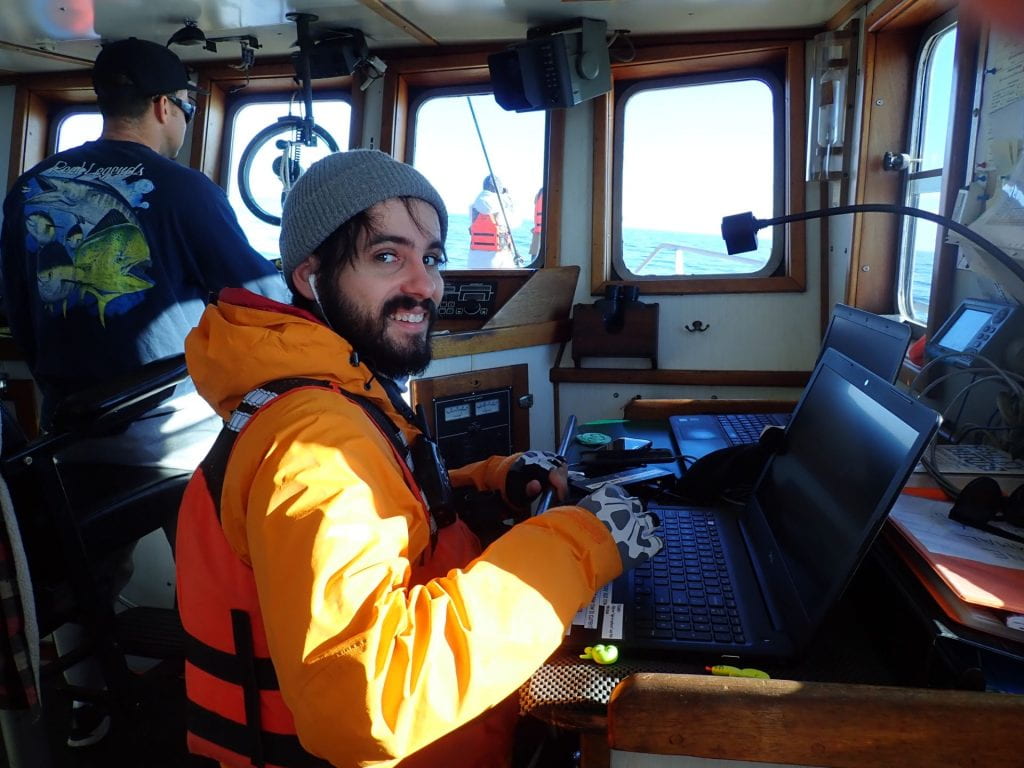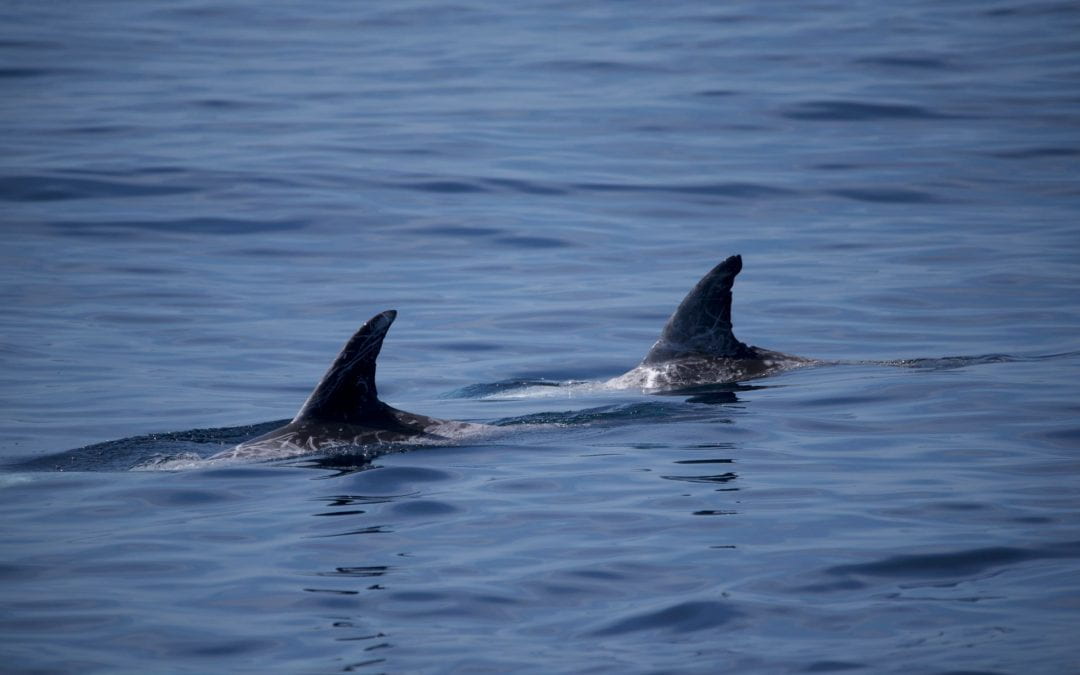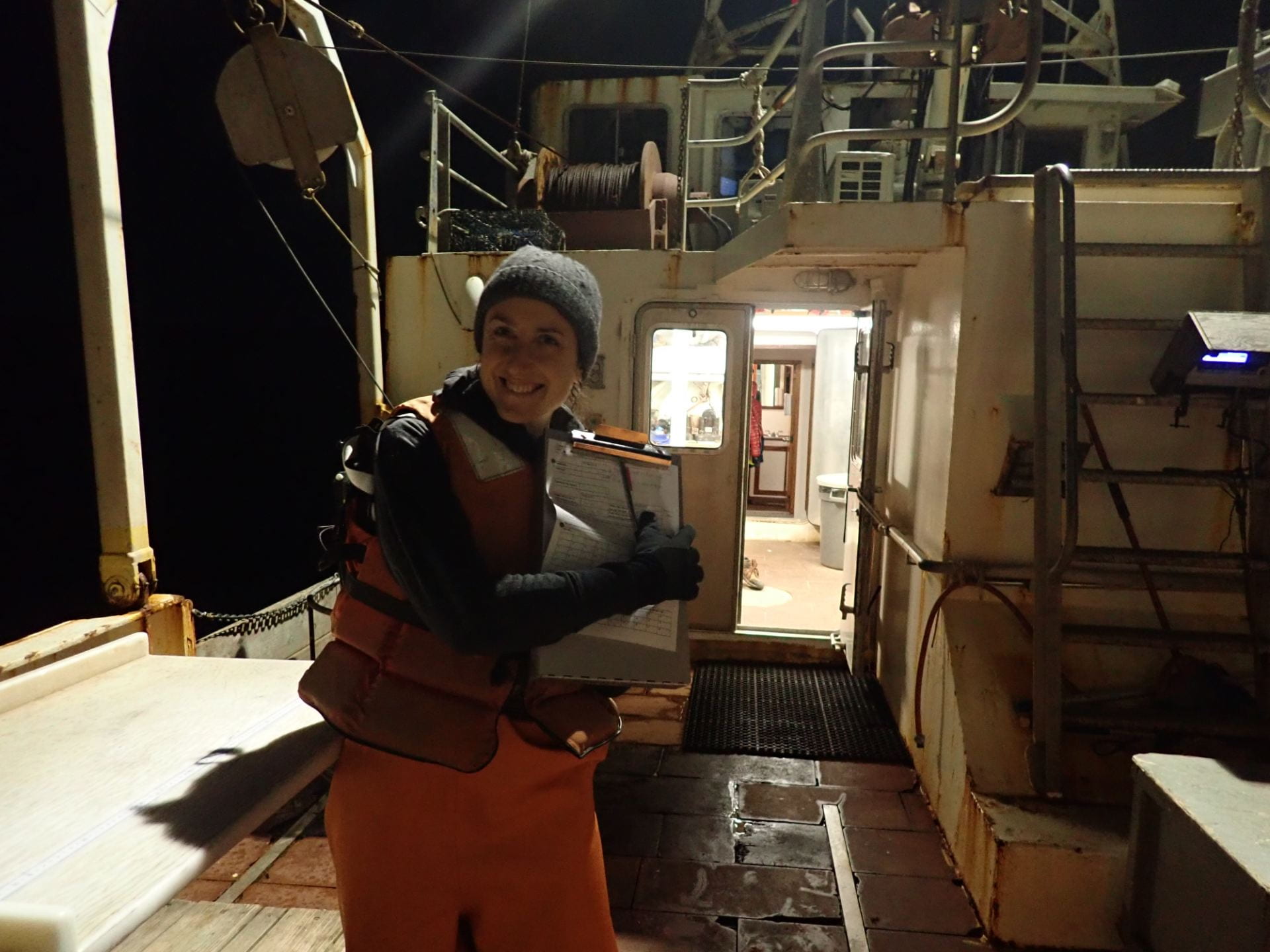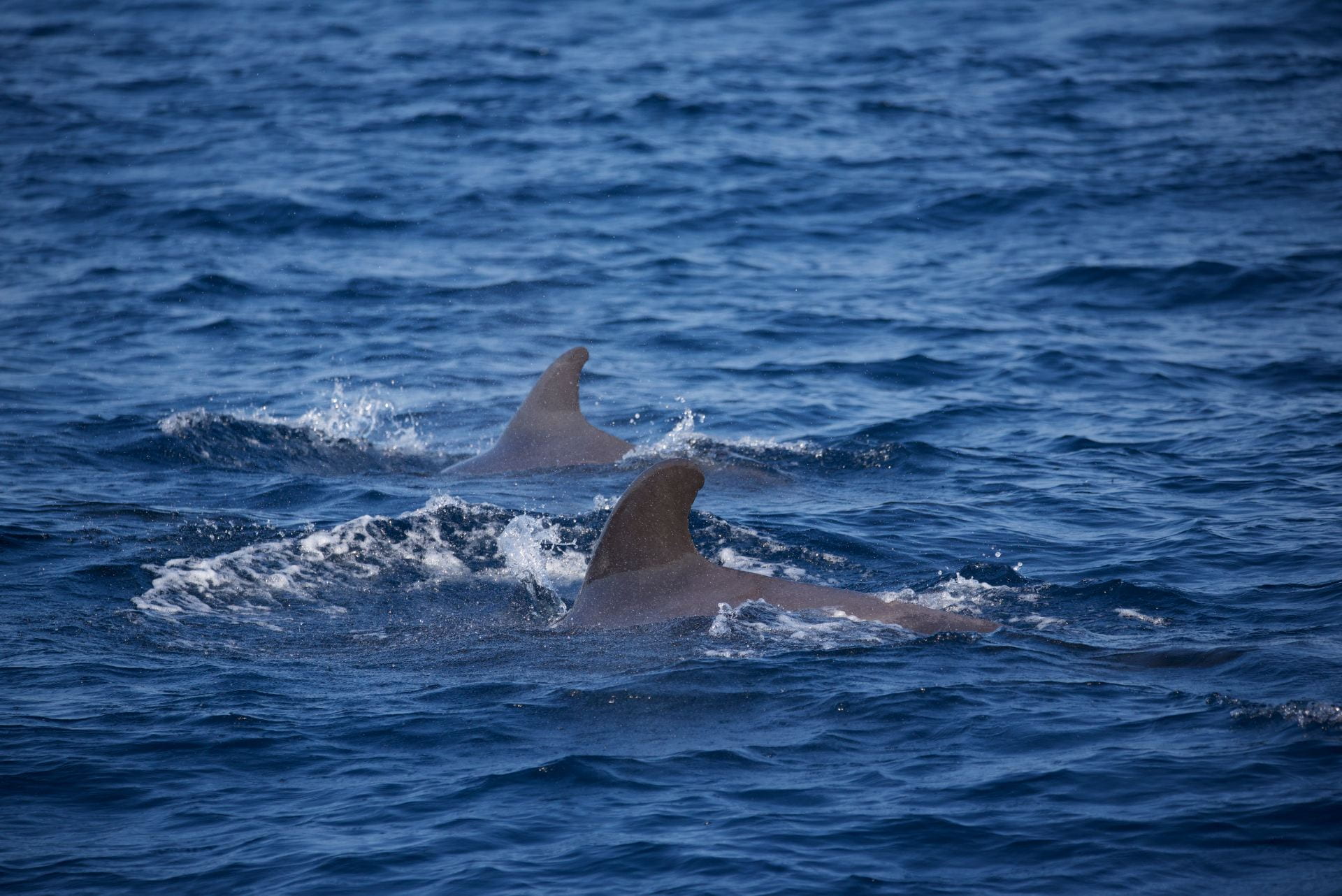It has been a busy year for our ocean monitoring project in the New York Bight! The project, funded by the New York State Department of Environmental Conservation, is an interdisciplinary multi-trophic level project that provides key information on the status of the New York Bight for managers. The project is lead by three principal investigators, Dr. Janet Nye, Dr. Lesley Thorne, and Dr. Joe Warren, who lend their expertise to the 5 main monitoring objectives: 1) monitoring the physical environment including temperature, salinity, fluorescence and carbonate chemistry using both shipboard and glider-based tools, 2) characterizing lower trophic level productivity, 3) quantifying abundance and distribution of pelagic fishes and squid in the NYB, 4) collecting sighting and behavioral data of cetaceans in the NY Bight, and 5) characterizing trophic interactions and oceanographic drivers of living marine resources. Science crew who participate in these monitoring cruises may, at any given time of their shift, be engaged in conducting a CTD cast, collecting and processing water samples from our cast, sifting through and preserving samples from a plankton ring-net tow, monitoring state-of-the art fisheries acoustic feed, setting a trawl on a particularly dense looking aggregation of biology below the surface (as directed by acoustic technician onboard), or spotting marine mammals while on line-transect effort from the bridge. The onset of a global pandemic this spring have proven to be a slight impediment to our regularly scheduled monitoring cruises this spring and summer, but we are looking forward to getting out again for our full sampling regime as soon as it is once again safe to spend a week onboard RV Seawolf living in such close proximity to our friends and colleagues.

Fisheries acoustic monitoring gear that crew use to spot aggregations of pelagic fishes or inverts upon which to set the mid-water trawl. Missing in action: our very dedicated PhD students and acousticians Hannah Blair and Brandyn Lucca

Dallas Jordan, an MS student in our lab and an avid birder, tries his hand at marine mammal line-transect work (spoiler, he was successful in recording this sighting in our survey software)
During these cruises, our lab leads line-transect surveys of marine mammals in the NYB and helps collect samples for all aspects of the monitoring program. The figure below demonstrates the impact rough winter weather has on our overall survey effort. Though we didn’t get a whole lot of effort distance in for the October 2019 and February 2020 cruises, we still had a few memorable sightings from the winter cruise. Though it was the middle of February, offshore the warm, meandering gulf stream waters that infiltrate the NYB can make conditions feel almost spring or summer like out there. We had a beautiful survey window as we steamed from the most offshore point of transect 7 (our western-most transect closest to the Jersey coast) to the next transect we saw short-beaked common dolphins, two groups of Risso’s dolphins, and a smattering of common bottlenose dolphins. Short-beaked common dolphins are distributed in on and off-shelf waters, but most of our Risso’s sightings occur in shelf-break (200m isobath) associated waters. We were also visited by a group of Risso’s, including calves, when we paused survey effort to conduct an offshore mid-water trawl (pictured below).





